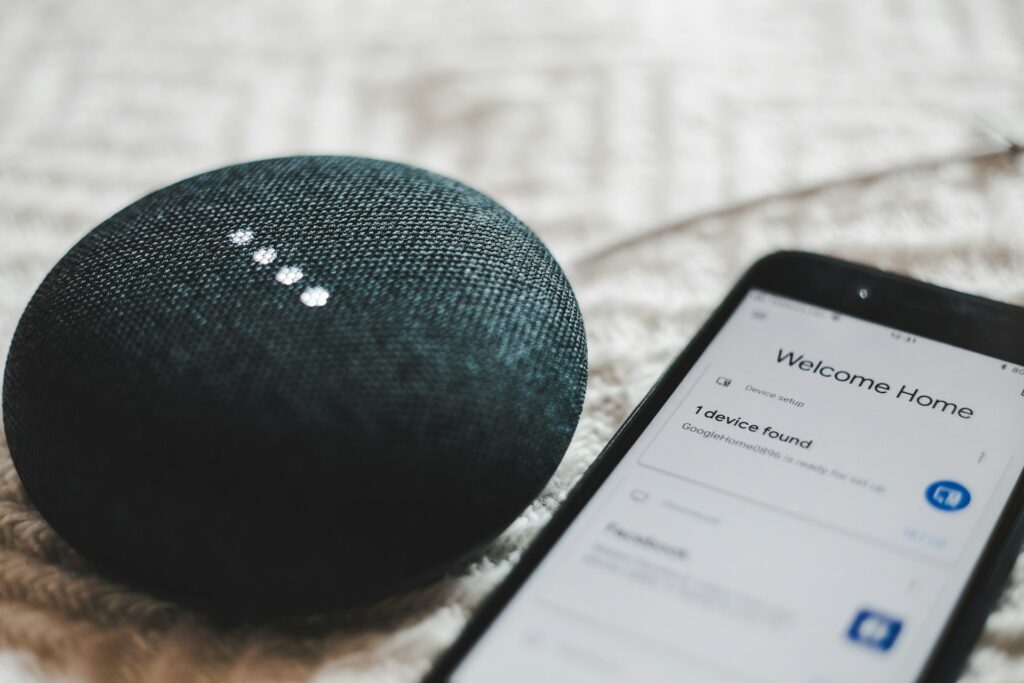The Evolution of Emotion-Sensing Artificial Intelligence in Smart Homes

The Evolution of Emotion-Sensing Artificial Intelligence in Smart Homes
Take a moment to picture yourself entering your house after a long and stressful day. You don’t utter a single word. There is no tapping on your phone. You do not give an order with your voice. Even so, your house is aware. It is able to detect your unease. The lights dim, your selected playlist begins to play, the aroma diffuser begins to emit a soothing lavender scent, and the temperature is adjusted to the degree of comfort that you desire. All of these things happen instantly.
It just knew what to do; you did not instruct it in any way. We would like to welcome you to the future of smart living, which consists of houses that not only listen to orders, but also comprehend your feelings and react in real time. The world of emotion-sensing artificial intelligence in smart homes is swiftly developing from a novelty to a need, and this is the emerging realm of this technology.
How One Can Go from Being “Smart” to Being “Sensitive”
This is the first wave of smart houses that we have seen. Our lives have become more connected and efficient as a result of the introduction of devices such as voice assistants, smart thermostats, and app-controlled lighting. On the other hand, even the most intelligent machines had a significant limitation: they could only react to what humans taught them.
The goal of emotion-sensing artificial intelligence is to entirely alter that. Instead of waiting for instructions, it makes use of face recognition, speech tone analysis, behavior patterns, and biometric data to establish how you are feeling. It then makes adjustments to your home environment in accordance with this understanding. Empathy is a step up from intelligence in this case.
What are the inner workings of emotion-sensing artificial intelligence?
It may seem like science fiction, but it is really based on real-world technology that is rather advanced.
1. Recognition of an individual’s face and microexpressions
Using artificial intelligence that is embedded into smart cameras, it is possible to identify minute changes in your facial expressions, such as furrowed brows, tight lips, and enlarged eyes, and interpret them as tension, grief, rage, or delight. Your house is able to rapidly recognize your mood thanks to these indicators, which are often subconscious.
2. Voice Tone Analysis
Even if you are just saying something as basic as “I’m home,” your tone conveys a great deal of passion and feeling. These variations in pitch, pace, and loudness may be detected by emotion-sensing artificial intelligence, which can then disclose whether you are weary, annoyed, or happy.
3. The Integration of Wearables
There is the potential for smartwatches and fitness bands to transmit emotional signals to your house. These devices can monitor your heart rate, body temperature, and skin conductivity. What is the cause of the rapid heartbeat and shallow breathing? It is possible that this may cause your house to enter a state that is peaceful.
4. Habits of Behavioural Style
The way in which you engage with your smart home will, over time, teach it new things. If you make it a habit to turn off bright lights and switch to ambient music whenever you feel uncomfortable, your house will start to anticipate and imitate your behavior, even before you reach for a switch.
This has nothing to do with spying or exercising control. The concept of individualized well-being refers to the transition of your house into a partner in providing emotional support. Real-World Applications of Intelligent Homes That Are Aware of Emotions We need to make this technology a reality. A few examples of how emotion-sensing artificial intelligence might improve day-to-day life in the actual world are as follows:
The Management of Stress
Do you feel overpowered? The instant you enter through the door, your house might detect your raised heart rate, lower the lights, shut the blinds, play calming nature sounds, and change the temperature. All of these modifications could take place within a few seconds.
Lighting and music that are based on mood
There is a possibility that your house may brighten the room and start playing an uplifting music when it senses that you are in a cheerful or enthusiastic mood. Do you feel down? It is possible that it will switch to soothing acoustic music and pleasant tones in order to calm you.
The Optimization of Sleep
If your wearable device detects indicators of anxiety or sleeplessness, your house might make predictive adjustments to the environment of the bedroom. These adjustments could include a minor cooling of the room, a reduction in the amount of blue light exposure, and the recommendation of a relaxing bedtime ritual.
The Harmony of Relationships
All right, even this. The ability of smart houses to sense tension between individuals in shared areas, such as emotional changes or rising voices, and then react by generating an ambiance that is more relaxing or even proposing a break via environmental signals, is a significant advantage of these homes.
Who is the Technology Behind This?
- There is more to this than simply theory. Currently, both established technology companies and newer startups are competing to develop emotionally intelligent home systems.
- Amazon has submitted patent applications for Alexa, which would allow her to identify instances of emotional distress and provide assistance appropriately.
- An artificial intelligence system that can distinguish not just presence but also emotional states based on speech and behavior is being investigated by Google Nest.
- The mood lighting settings that are being integrated by Philips Hue and LIFX are ones that respond dynamically to the actions of the user.
- Emotional artificial intelligence chips and application programming interfaces (APIs) are being pioneered by startups such as Affectiva and Emoshape.
- According on your emotional reaction to the content you are seeing, even smart TVs are starting to modify the sound and visual quality of the television itself.
The Advantages Extend Far Beyond Coziness
It’s not simply a luxury to have the capacity to perceive emotions; it might have major repercussions that could completely transform your life:
1. The Monitoring of Mental Health
By becoming allies in the management of depression, anxiety, and burnout, smart homes might become useful. It is possible that check-ins, reminders, or even alarms to loved ones may be prompted by subtle changes in behavior, such as differences in sleep habits, diminished activity, or quiet.
2. Care for the Elderly and the Prevention of Loneliness
Home environments that are sensitive to emotions are able to identify signals of perplexity, grief, or suffering in elderly people who live alone. These houses may then offer early intervention or link the elderly person with caretakers.
3. The development of children
Children, especially those with autism or sensory sensitivities, might benefit from surroundings that are emotionally responsive because they can make them feel safer and more supported. It may be revolutionary to have a smart room that puts a youngster at ease when they are overstimulated.
4. The elephant in the room is the issue of privacy and ethics.
In light of the fact that such personal information is being gathered, such as facial expressions, emotional states, and speech patterns, it is only logical to wonder: Where does all of this information go? Who has access to the area? Is it possible to abuse it?
These are legitimate issues that need to be addressed with a solution.
AI that is responsible for perceiving emotions must be:
- By choice, not by coercion.
- open and honest about the information it gathers and how it is put to use.
- Strong encryption and choices for local storage make this a secure alternative.
- the absence of any kind of emotional profiling for the sake of advertising or manipulation; non-exploitative.
- There is a fine line that separates helpful and intrusive behavior. As a result, ethics must progress in tandem with technological growth.
What the Future Might Look Like
Fast forward to 2035. You live in a home that knows when you’ve had a bad day—and starts running a hot bath before you even speak. Your living room adapts to your mood before guests arrive. Your AI gently suggests stepping outside when it senses too much screen time. It’s a world where your house becomes a companion. A guardian of your mood. A silent therapist. A helper that listens not with ears, but with empathy powered by algorithms. This isn’t a distant dream—it’s already arriving, piece by piece.
Remarks to Conclude
The idea of homes that feel is no longer abstract. As emotion-sensing AI merges with smart technology, our homes are transitioning from passive shells into responsive sanctuaries. We’re building spaces that aren’t just connected—but conscious in a way that supports our health, happiness, and harmony. Yes, it raises questions. And yes, it demands responsibility. But at its heart, this technology isn’t about making machines more human—it’s about making human life more supported, more intuitive, and more peaceful. Because sometimes, all we really want is to come home to a space that understands us—without us ever saying a word.





